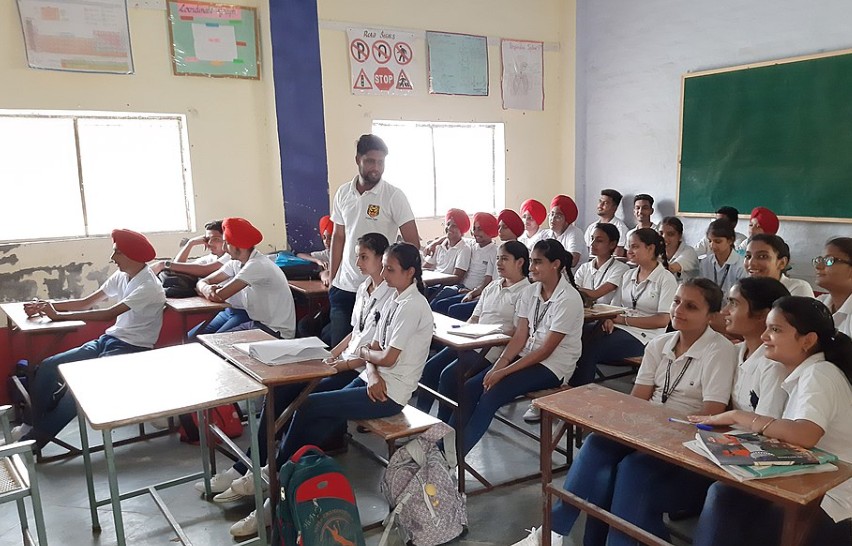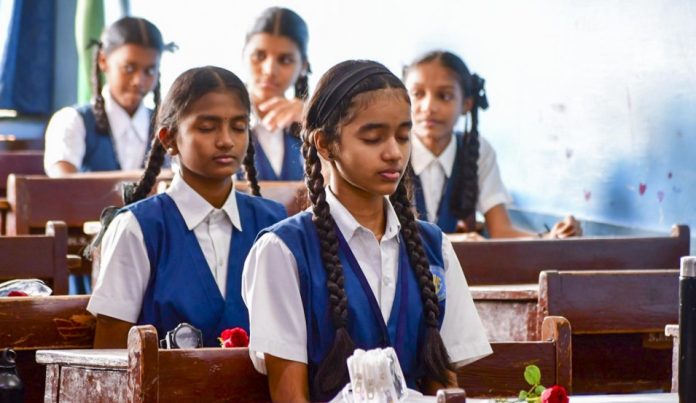The Punjab School Education Board (PSEB), which serves as the cornerstone of the state’s academic infrastructure for school-level education, is currently grappling with a dual crisis that threatens the educational prospects of over 12 lakh students across the state. The combination of a deepening financial crisis and an acute shortage of staff has placed immense pressure on the Board’s ability to function efficiently and maintain its mandate of ensuring quality education and smooth administrative operations. These challenges, if left unaddressed, could significantly impact student outcomes, delay essential academic processes, and weaken the state’s overall education system.
At the core of this looming educational disruption is the financial instability that the PSEB has been facing for several years now, but which has reached a critical level recently. Due to mounting fiscal pressures, the Board has reportedly been unable to fulfill basic operational commitments, including timely disbursement of salaries to existing staff members, procurement of examination materials, maintenance of infrastructure, and digital modernization. These issues have not only undermined the morale of staff and faculty associated with the Board but have also delayed important processes such as printing textbooks, conducting evaluations, and processing examination results.
Compounding the financial woes is the serious shortage of human resources. Several departments within the Board are reportedly functioning with only a fraction of the required workforce. Numerous posts — both teaching and non-teaching — remain vacant, many of which have been unfilled for years due to hiring freezes, retirements, or resignations without replacement. The dearth of trained personnel has hampered the day-to-day workings of the Board, including timely assessments, curriculum development, examination paper setting, and addressing student and school queries.
The ramifications of this crisis are not just administrative but extend deep into the classroom. Students enrolled in government-affiliated and aided schools under the PSEB are increasingly being affected by delays in curriculum delivery, lack of timely distribution of textbooks, and the growing burden on the remaining teachers. As workloads increase and resources thin out, the quality of education risks being compromised. Many rural and semi-urban schools are struggling without subject-specific teachers, particularly for core subjects like Mathematics, Science, and English. This, in turn, may have a long-term impact on student performance in board examinations and competitive entrance tests.
Furthermore, the current crisis raises concerns about the future credibility of the PSEB’s examination system. With limited staff, organizing exams for lakhs of students becomes a herculean task. The evaluation of answer sheets, already delayed in previous sessions, might face further setbacks this year, leading to late declaration of results and subsequent delays in college admissions or vocational training enrollments. Students in Class 10 and 12 — for whom timely results are crucial for shaping their academic futures — stand to suffer the most.

The situation is further exacerbated by the lack of digital infrastructure and technological investment. While other boards across India are transitioning into digitized formats for paper setting, evaluation, and result management, the PSEB lags behind due to budgetary constraints. The ongoing financial crunch has prevented much-needed upgrades to software systems, database management, and other technological platforms that could have eased administrative burdens and improved efficiency.
Parents and educators alike have started voicing their concerns. Many have appealed to the state government to take swift and decisive action before the situation deteriorates further. Teachers’ unions have also been vocal, staging protests and submitting memorandums demanding immediate recruitment, clearance of pending dues, and the allocation of a dedicated financial package to stabilize Board operations.
Despite the challenges, the PSEB continues to function with the dedication of its existing staff, who are reportedly working overtime and often handling the responsibilities of multiple posts. However, even their commitment may not be enough to keep the system afloat if structural support is not extended soon. The Board, which is responsible for more than just school curriculum — including teacher training, curriculum innovation, and implementation of education reforms — cannot sustain these efforts without appropriate manpower and funding.
Education experts suggest that the crisis reflects broader issues in state education financing and governance. Some have pointed out that while infrastructure development and large-scale education schemes often make headlines, the operational backbones like education boards are frequently underfunded and neglected. Addressing the immediate concerns of the PSEB requires not just emergency funding but also long-term planning, better policy alignment, and institutional reforms.
There have been discussions in the corridors of power about the possibility of restructuring the Board, introducing digital tools for greater efficiency, and collaborating with private and academic institutions for curriculum and teacher support. However, the success of such reforms depends on political will and timely execution. The government has, in recent statements, acknowledged the issues plaguing the Board and hinted at steps to address the financial and staffing shortfalls. But no concrete timeline or detailed action plan has been released yet.
For over 12 lakh students depending on the PSEB for their academic journey, the coming months will be crucial. Any further deterioration in the Board’s functioning could lead to systemic delays and reduced learning outcomes — a situation that could also widen the education gap between public and private school students in the state. At a time when the focus should be on enhancing educational quality, promoting inclusivity, and preparing students for a competitive global environment, these internal crises are setting back the entire system.
In conclusion, the Punjab School Education Board’s current crisis is not just a bureaucratic issue; it is an educational emergency that threatens the futures of lakhs of children in the state. Resolving the financial constraints and recruiting essential staff must be prioritized by the state government. The future of Punjab’s youth — and by extension, its socioeconomic growth — depends heavily on how effectively and urgently the state responds to this challenge. Until then, students, teachers, and parents remain caught in a cycle of uncertainty, hoping for prompt action and a return to stability.


